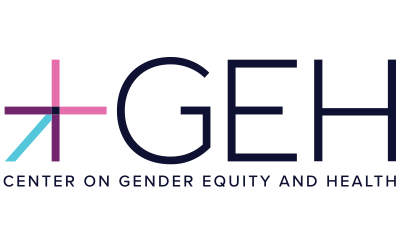Recognizing the (In)visible: What is the Impact of COVID-19 on LGBTQ Communities in India?
Authored by: Edwin Thomas and Anita Raj
June 24, 2020

At the peak of India’s COVID-19 crisis and the subsequent lockdown, a petition was filed in Delhi’s state court requesting rehabilitative assistance, including food, medicines and rent exemption for sex workers and members of the LGBTQ community. This petition is in line with recent media highlighting that LGBTQ individuals, and in particular transgender people, face disproportionate risk for COVID-19 and lockdown-related health consequences in India. Unfortunately, this petition, which also included request for protections for sex workers, was set aside for lacking necessary “groundwork” to justify its consideration.
Perhaps the petition did inadequately describe how these vulnerable groups could be identified and how implementation of protections could occur in light of identification difficulties, as noted by the justices. Regardless, such a set aside negates the fact that LGBTQ individuals may face greater risk for COVID-19 infection and mortality, and maintains the invisibility and discrimination of LGBTQ individuals broadly.
This judgment of the High Court in Delhi is emblematic of continued deprioritization of gender inclusivity in policy, and reinforces a national policy framework for COVID-19 assistance in India that does not consider vulnerable LGBTQ groups. A nation cannot contend with a pandemic if it lacks consideration of its most marginalized.
While India has seen progressive judgments for LGBTQ rights from the highest court of the land, discriminatory laws pertaining to gender self-identification and impunity for violence persist. Correspondingly, LGBTQ individuals in India continue to face job and housing discrimination, and even institutionalized violence, increasing their vulnerability to homelessness, poverty, and poor access to health care. This, in turn, can increase their risk for exposure to the coronavirus and severe complications if infected, for a population that disproportionately bears the burden of HIV infections, tuberculosis, depression, anxiety and substance use.
Reinforcing ongoing health disparities for LGBTQ communities during the pandemic will only serve to increase the caseload and case fatality rate from COVID-19 for the nation as a whole.
We can change this trajectory via efforts to reduce discrimination and increase health access, and in so doing, help the nation flatten the curve on COVID-19 infections. To that end, we recommend the following:
- Ensure existing health centers are responsive to the needs of LGBTQ communities. As noted in prior research, this should be part of creating a wider gender-responsive health system, inclusive of non-discriminatory patient centered care for sexual and gender minorities. Little has been done over the years to sensitise community health workers to reach out to trans and non-binary communities and de-institutionalise discrimination at the various levels of care. India’s national health insurance scheme has seen complaints of shutting out gender diverse communities from its roster.
- Create or strengthen means of procuring government schemes for COVID where sexual and gender minorities can be recognized and supported, building on the principles laid out in the landmark Supreme Court judgments on LGBTQ rights to ensure social and health services can be accessed without stigma and discrimination. This could be in the form of setting up dedicated, albeit temporary, shelters, access to the public distribution system without possession of identity documents, ensuring provision of free essential medication and a monetary unemployment allowance.
- Widen the reach of the various COVID-19 needs assessment studies and impact analyses to include LGBTQ communities. Much research is happening on the impact of COVID-19 in India, but we are not aware of any studies that actively focus on or include LGBTQ individuals. This is an opportunity to build onto existing evidence and fill evidence gaps, especially for sexual and gender minorities. We continue to lack quality data to understand the impact of COVID-19 in these communities, which only impedes our ability to justify and build an evidence-based response to the pandemic.
- Support via law and policy an environment that ends discrimination and abuses against LGBTQ individuals. This includes strengthening existing legal provisions around violence, working on a broader anti-discrimination law especially in the workplace and greater legal recognition and programmatic inclusion of alternative family structures based on self-made systems of social kinships due to rejection by biological families. Policy solutions are possible in the country based on past progressive judgements such as NALSA v. Union of India (2014), Justice K. S. Puttaswamy judgment (2017) and Navtej Singh Johar v. Union of India (2018). This is the time to continue the push for progression while supporting public health.
In sum, continued social vulnerabilities – including stigma, discrimination and violence – affect LGBTQ people in India and likely increase their risk for COVID-19 infection and mortality, as well as mental health and economic impacts of the pandemic and shutdown. Yet, COVID-19 policy continues to be blind to the unique needs for this population. Addressing COVID-19 policies to be more inclusive of LGBTQ populations and building the evidence base for these policies can go a long way in advancing the equality that Pride Month commemorates.



